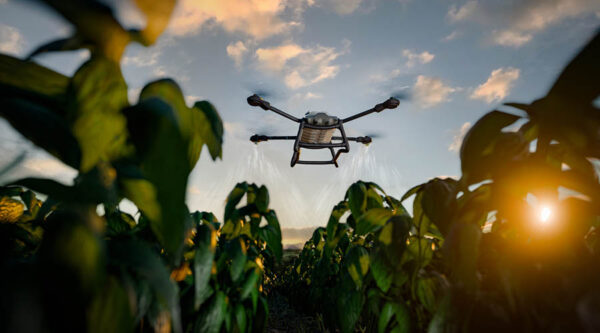
Keeping Children Safe in Education 2020: a briefing note on the proposed changes
10 March 2020

The proposed changes
The government is proposing to update Keeping Children Safe in Education 2019 (KCSIE) and a draft version of KCSIE 2020 has recently been published showing the proposed changes. The revised document can be accessed here.
The majority of the proposed changes are to provide clarity but the more substantial changes include:
Part 1
- The proposed introduction of a shortened version of Part 1 to be made available to staff that do not work directly with children (the consultation uses the examples of cleaners, catering staff in this context).
- Text added to make it clear that both mental and physical health are relevant to safeguarding and the welfare of children.
- Additional guidance at part 1 and Annex B on criminal exploitation and serious violence to assist schools in identifying children at risk.
- Additional paragraph to reflect online abuse and the fact that it will often occur concurrently with face to face abuse.
- A new paragraph on mental health to help staff make the link between mental health concerns and safeguarding issues.
- Peer on peer abuse paragraph updated to cover intimate personal relationships between peers as well as a reference to hazing-type violence and rituals.
- Greater clarity on the emphasis on staff raising safeguarding concerns about a member of staff (including supply staff and volunteers).
Contact our Education team now.
Part 2
- Moving the online safety content from Annex C to the main body of Part 2 to encourage schools to consider online safety as a key part of their approach to safeguarding and to acknowledge that online abuse may occur concurrently with face to face abuse.
- New paragraph to signpost guidance where a school or college is a charity (this is helpful in joining up with recent guidance published by the Charity Commission).
- A new paragraph to provide context to ‘whole school approach’.
- The part is updated to be clear that reference to providing the child protection policy should include policies reflected elsewhere in Part 2 such as online safety, peer on peer abuse and SEND.
- An additional reference to SEND and medical conditions to make the link to safeguarding.
- Updated guidance for DSLs regarding barriers to information sharing, and supporting children with social workers following the Children in Need review (available here).
- The new data protection tool kit has been added, as has a new paragraph to make the link between behaviour and a safe educational environment.
- The full section of current Annex D (boarding schools) moved to Part 2.
Part 3
- Whilst there are no proposed changes to the statutory requirements, the revised guidance has been significantly restructured to better reflect the recruitment process in practice and to emphasise the processes that should be in place from advertising a vacancy right through to appointment. There is an emphasis on a school or college not being overly reliant on DBS checking.
- There are no changes to the statutory requirements but anyone involved in recruitment would be minded to read Part 3.

Part 4
- Significant changes to the structure of Part 4 have been made, with the aim of improving readability and a more logical flow to the guidance.
- There are no changes to the statutory requirements placed on schools and colleges.
- Additional wording requiring schools to consider transferable risk from incidents outside of school that may indicate that the person may not be suitable to work with children (for example, domestic violence).
- Guidance on managing allegations against supply teachers and governors, and on handling ‘low level’ concerns that do not meet the harm threshold.
Part 5
- Following the publication of the latest “Sexual violence and sexual harassment between children in schools and colleges” guidance in May 2018, the DfE is proposing an update to Part 5 to make clearer what governing bodies and proprietors should be doing to ensure allegations of child sexual violence and harassment are managed appropriately.
- There are additional considerations when thinking about keeping the alleged perpetrator(s) and victim apart.
The Department for Education has launched a consultation regarding the proposed changes to KCSIE which is due to close on 21 April 2020. The consultation can be accessed here and we would encourage you to submit your views. This may be via your DSL and your local safeguarding team. We will also be submitting our views.
Whilst the large proportion of the changes are welcomed and sensible, we do have concerns regarding the proposed introduction of a shortened version of Part 1.
In our view, catering staff, for example, can have valuable insight into children’s behaviours outside the classroom and are key to spotting warning signs of safeguarding issues, such as not eating or not sitting with their friends at mealtimes. There is a risk that by introducing a shortened version of Part 1, the emphasis on safeguarding being everyone’s responsibility may be diluted.
There is also a danger that an employee may start out in a non-contact role, but that over time that role may develop and contact with children may increase to the point where the sight of the full Part 1 guidance would have been more appropriate. Not treating all staff the same increases the risk that safeguarding concerns will go unnoticed. It might also add difficulties for those managing the process of ensuring all staff have read and understood Part 1 in a school; it needs them to make a judgement as to which category a member of staff falls into and then review it from time to time. We intend to feed these concerns into the consultation.
We shall publish a full briefing note on the changes to KCSIE and the implications for schools once the final draft has been published, so please watch this space. We will also update the template Safeguarding Policy and guidance notes we produce for the ISBA to reflect the changes in due course; a tracked change version will be available if you wish to update your own school or college Safeguarding Policy.










